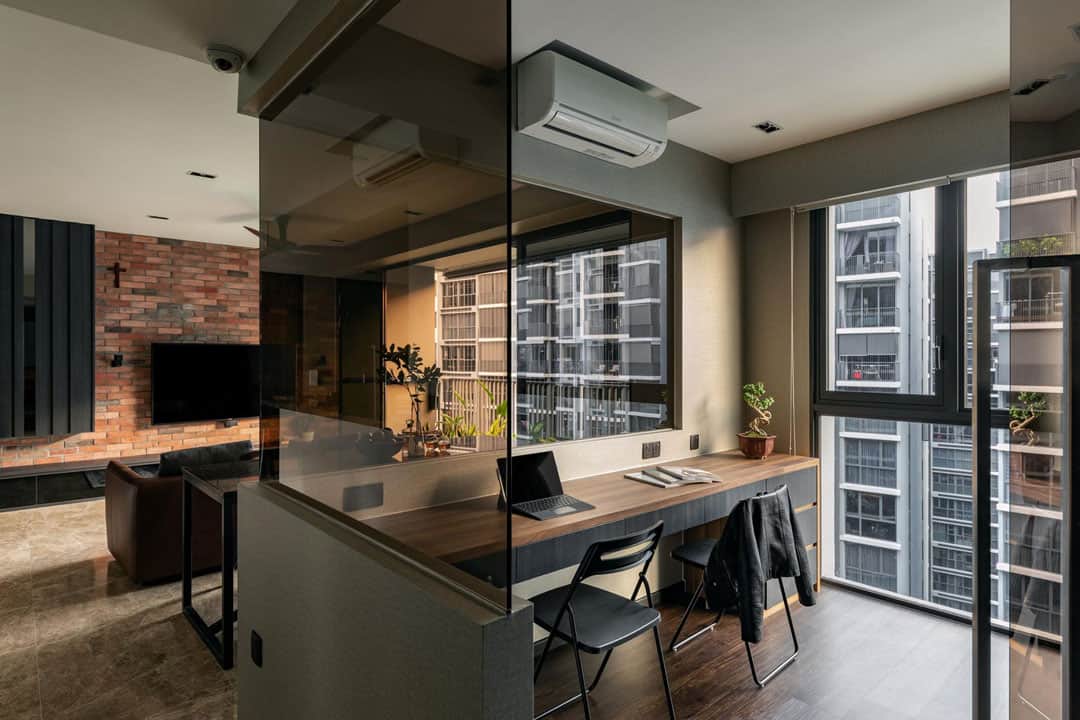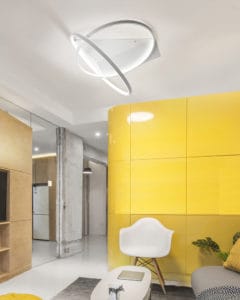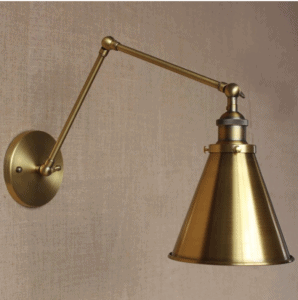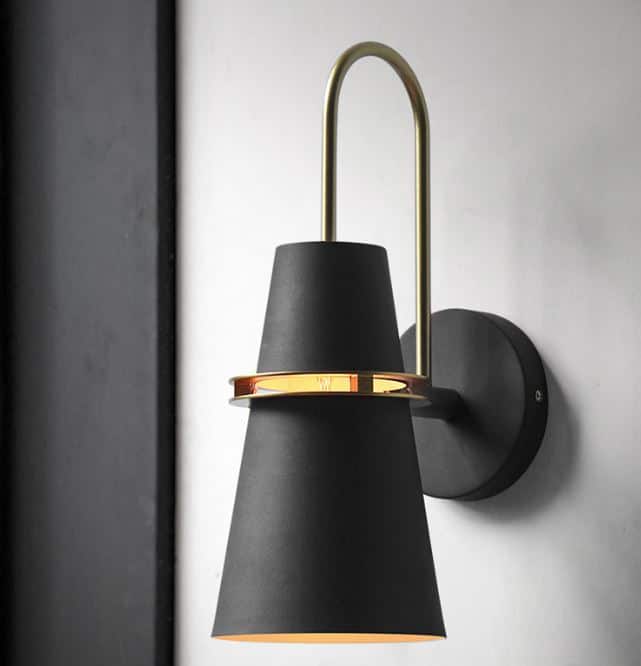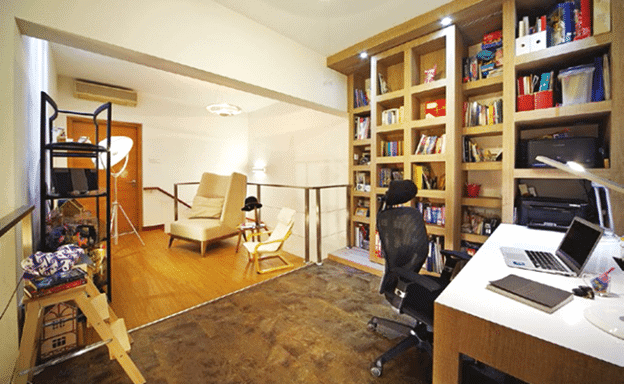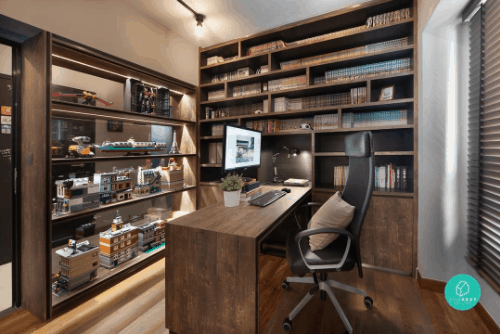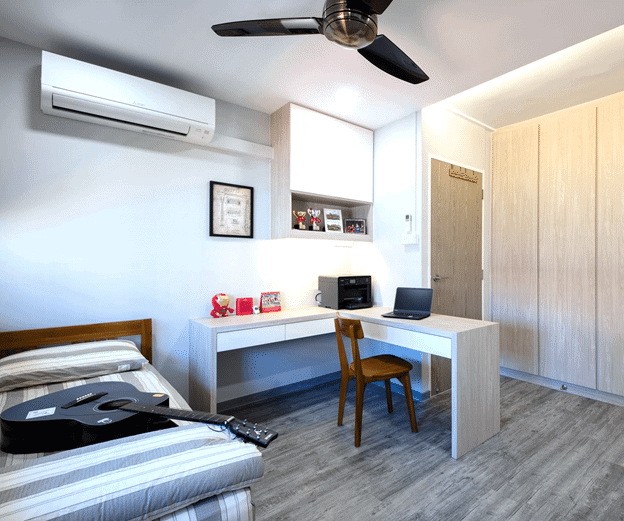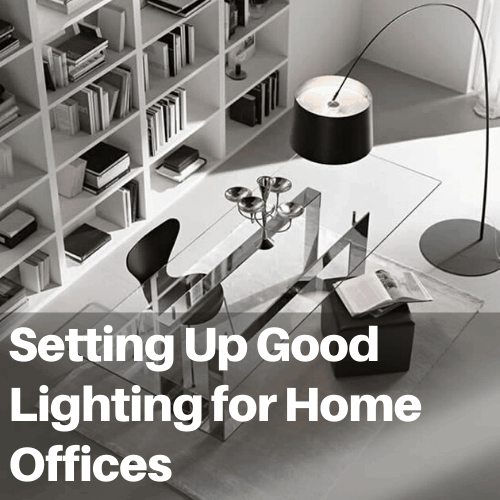 Flexible hours, less transportation expenses, and a more varied life- these are the advantages of working from home. This is true whether you’re self-employed or employed on a work from home set-up. With the Covid-19 pandemic which hit the whole world hard, working from home should definitely be considered, or is already the new norm!
Flexible hours, less transportation expenses, and a more varied life- these are the advantages of working from home. This is true whether you’re self-employed or employed on a work from home set-up. With the Covid-19 pandemic which hit the whole world hard, working from home should definitely be considered, or is already the new norm!
Working from home will demand one major requirement- a home office. The question you may have now is, “How do I set-up a home office?” In particular, you may also be wondering “how will I create good lighting for my home office?”
Setting up a home office is not rocket science. However, it shouldn’t be taken lightly and should need more than a table, a chair, a computer, and an Internet connection. One aspect of home office taken for granted is lighting. In this article, you will learn how to set up good lighting for your home office.
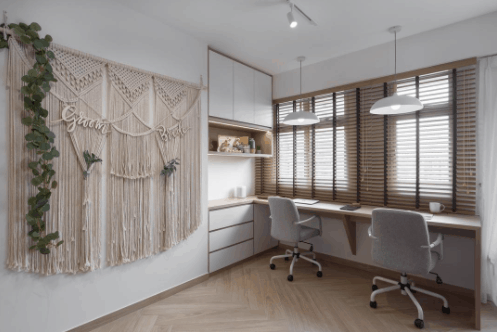
Importance of Good Lighting for Home Offices
It may be true that your computer and a stable Internet connection are the essentials for a good home office. After all, you wont be able to work without these two. However, working at home entail long hours, thus the need for a sustainable way of working.
Okay, sure, you may be able to work in your bed without a table. You can do everything with your laptop and submit everything through the Internet. But in the long run, what could happen to you? Without a table, your back could be affected and may cause slipped disk. Without proper lighting, your eyes can be strained, damaged, and headaches may occur regularly. Get the point?
Without a doubt, home office lighting can have major impact, good or bad, on your health. But besides this, it has also been long established how light can affect your mood and increase level of energy. Poorly lit workspace can dampen your mood.
On the contrary, a well lit space will give you a boost. If you’re in the mood, you’ll be more inclined to work, and hence you’ll be more productive. If you’re productive, as a business owner more especially, you’ll be able to generate more income. Or as an employee, you’d be able to perform better, leading to your much anticipated bonus and pay raise. So we opine it’s definitely a worthy investment to put in to get your home office setup right!
These are just some of the main advantages of good home office lighting. And only with these, we hope you already understand its importance. Now, let’s discuss how to set up your home office lighting.
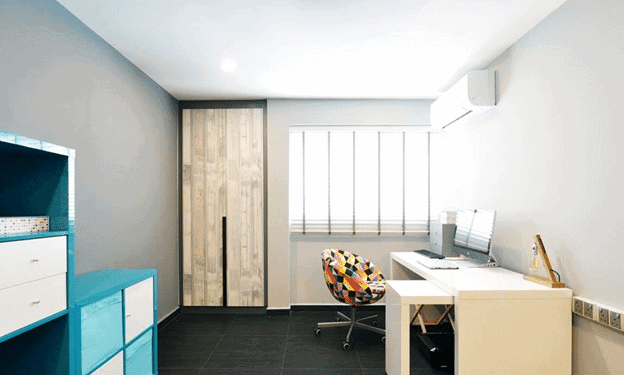
Access to Natural Lighting
If you have the luxury to choose a space, opt for the one with access to natural light. Whether you’re in a commercial office or a home office, we always recommend natural lighting as it’s the best source of light. Scientifically proven, bright warm sunlight improves your mood and provides the push to keep working harder. However, having natural light is simply not enough. You should also consider the orientation of your office.
When setting up your office for natural light, do not face the window directly especially if it’s eastern or western facing. Instead, place the workspace alongside windows. When you position your desk along the north or the south, you can help reduce shadows and glare from the sun to your computer.
Image Credit: Renonation, Voila
Blinds are also highly recommended for flexibility. Light-diffusing blinds or combination blinds will not only be decorative but can also provide you natural lighting options.
Finally, if you have several windows to choose from, go for the one with the view. A good view may help you release tension for five minutes while working.
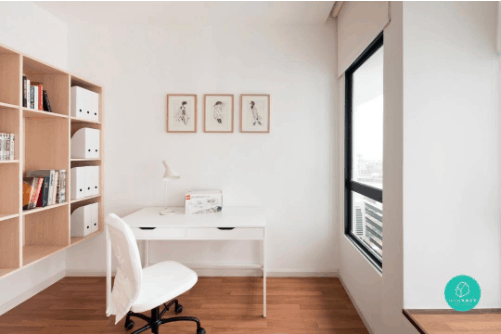
Deal with Overhead Lights
Realistically speaking, natural light is not available 24 hours of the day. This is where artificial lighting comes into play. The most common type of artificial lighting is ambient lighting. To put it short, ambient lighting is the general lighting available in a room and more commonly provided by overhead lights. In home office lighting, overhead lights are not the best lighting source. Although it is highly recommended to avoid the direct glare from overhead lights, it cannot be eliminated in total as it fill spaces that other sources of light cannot.
To be safe, go with a dimmable overhead light. There may be times when your home office will double for another purpose. Adjust your overhead light to what suits the purpose best. Opt for ceiling lights that will give character to your office.
Get this look: Betina Dual Angel Halo Rings Ceiling Lamp
Task Lights for Specific Tasks
Task lighting is the most important type of lighting for home offices. For computer work, shop drawings, document filing, and other focus intensive tasks, task lighting should be provided. If you have multiple work stations in your home office, provide it all with task lighting. For example, you have three desks, one for the computer, one for filing, and the other for reviewing photos, layouts, and drawings. You should set up dedicated task lighting for each.
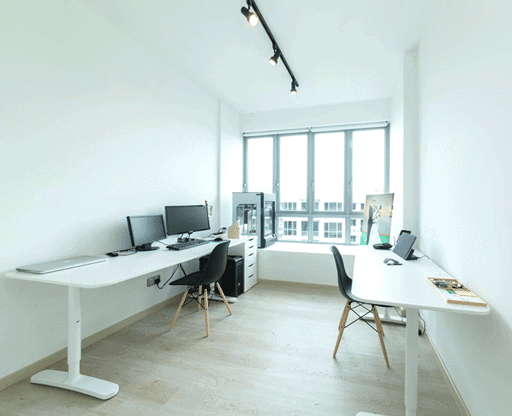
Task lights include but is not limited to desk lamps, wall lamps, and track lights. Desk lamps are commonly used, but to save space, we recommend adjustable wall lamps so your desk will have more space for actual office related documents.
Shop this look: Bronberg Vintage Twin Arm Wall Lamp
LEDs over Fluorescents
Fluorescents have been with us for decades already. Now is just the right time to move on from it. Go for LEDs instead.
LED bulbs are in for many reasons; including longer lifetime, less heat generation, more color choices, and more importantly, energy efficiency. It’s your home, it’s your office, you’ll pay the bills, so go for the more energy efficient choice.
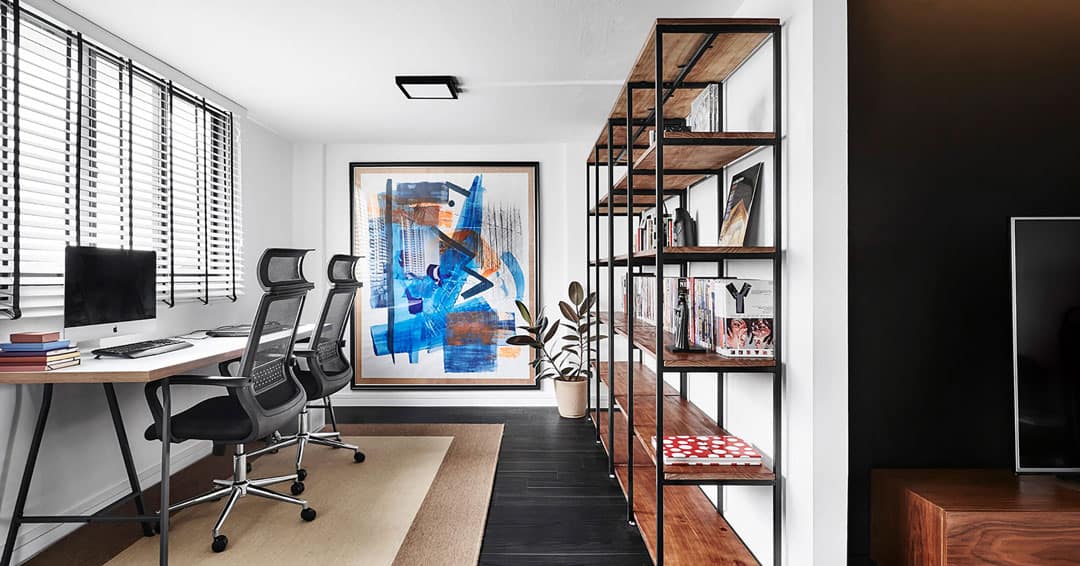
Whether it’s a wall lamp, pendant lamp, ceiling light, or whatever task light you go for, there’s almost always a LED bulb suitable for it.
Get this here: Magnuto Minimalist Classy Tall Slit Cone Wall Lamp
Recommended Lighting Levels
SS 531, also known as the Singapore Standard Code of Practice for Lighting of Work Places have several lighting recommendations for commercial offices and industrial workplaces. Despite your home office not being governed by this, you can still take a few notes from it. After all, these were recommended for safety and productivity reasons.
The following are the recommendations from SS 531:
- Filing, Copying – 300 Lux
- Writing, Reading, Data Processing – 500 lux
- Technical Drawings – 750 lux
- CAD Work Stations – 500 lux
All of which are tasks you can perform in your home office. Knowing your required tasks and the recommendations above, you may then be able to finalize what amount of lux you will need for your home office.
As an example, CAD work stations, which requires the use of computer, requires less amount of lux than technical drawings which requires manual labor. This implies that if your work requires tedious manual jobs, then higher lux is needed. Take note that the lux requirement is a combination of all lights in your home office. If you have a mix of wall lamps, overhead light, and accent light, then all should be considered in the computation.
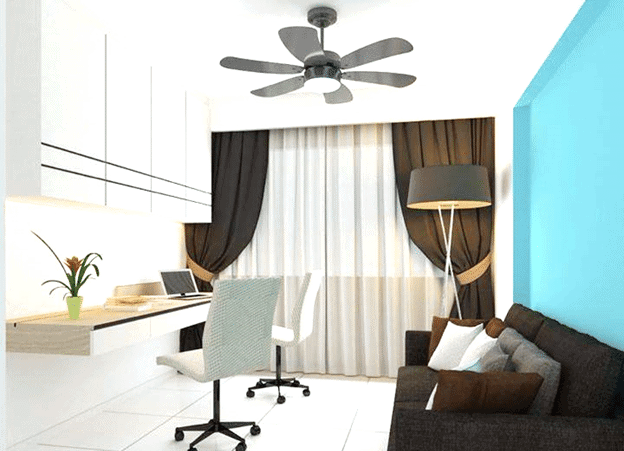
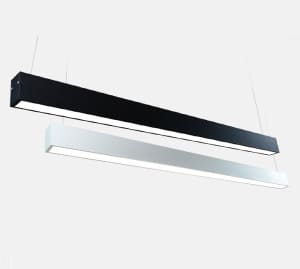
Balanced Lighting
Ever heard of the saying “Too much of anything is bad”? That’s the same case in home office lighting. A poorly lit space is bad, but an overly lit office is also frowned upon. That’s why general lighting should still be considered in good home office lighting and task lighting is deemed very important because it provides a sense of balance.
For more balanced lighting, consider using dimmer switches for all lightings if possible. Having your lights on dimmers and hanging light-diffusing blinds in your windows allows you to modulate light levels throughout the day, depending on the time of day and task at hand.
Image Credit: Renopedia, The 80’s Studio
Location Matters
It is a must to consider where light is coming from. For natural light as mentioned earlier, be mindful of the shadow and glare that may be caused by the sun.
For artificial lighting, the case is the same. As you work on the computer, a light source behind you will definitely cause a glare on your monitor. Hence, avoid it. Task lighting can also cause unintended shadows that can be annoying and distracting as you work. For example, if your desk lamp is on your right, and you right with your right hand, your hand and arm will cast shadows on the paper you are writing on. So put the desk lamp on your left.
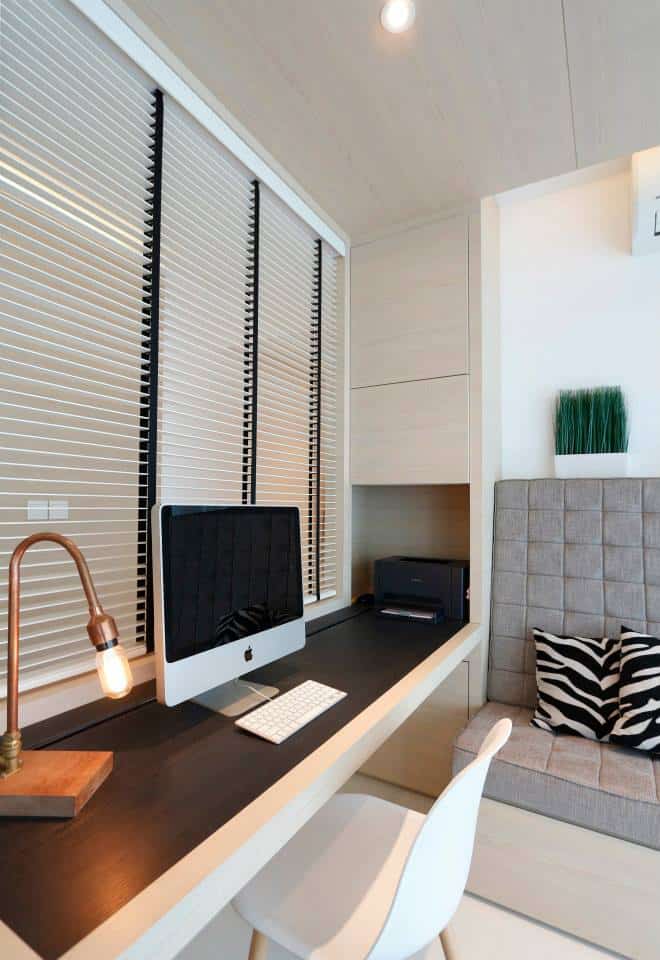
Better yet, provide extendable wall lamps on both sides of the table. With this, you have the luxury to choose what to turn on, depending on the task you’re completing.
Aesthetics- Accent and Decorative Lights
Now that we’ve gone through with the essentials for home office lighting, you should also consider adding accent lights and decorative lights. With decorative and accent lighting, the visual character of your home office improves in general. After all, a visually appealing office could give your confidence a boost and make you look forward to working again the next day. Who doesn’t want to work on a good office, right?
For a playful touch in your office, you may opt to “break the serious vibe”. Why not showcase your collectibles through a glass panel shelving with accent lights? This will give a playful and relaxed vibe and if you’re a collector, this might even give you more inspiration.
Image Credit: Qanvast, The Scientist
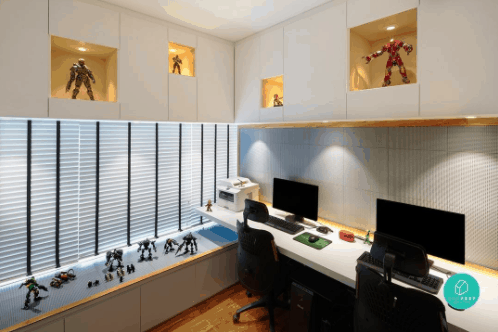
You may also add under cabinet lights for overhead shelves. This will double as an accent light and a task light as well.
Image Credit: Renopedia, Viola
Conclusion
At the end of the day, you work to learn, to earn, and to survive. In order to achieve all of these as someone who works from home, you should consider prioritizing lighting for your home office. With good home office lighting, you can be more productive, healthy, and confident. Set up your home office now, follow these guidelines, and you’ll surely enjoy the benefits of working at home.
